My naval career started on July 28, 1944; I was sent to Sampson, New York for recruit training. After twelve weeks of boot camp, I took a one-week leave. I returned to Sampson and was then was shipped on a troop train to San Diego, California. Upon arrival there, I reported to the naval base because the ship I was picking up was on sea trials. After a few days, I was ordered to the USS Sandalwood AN 32. We sailed to the Hawaiian Islands and into Pearl Harbor. The dates are not exact, but it was in November 1944. We towed targets for the air force and navy planes for a few weeks. We then got orders to proceed to Eniwetok in the Marshall Islands. We were at sea for 36 days towing four barges of equipment; our speed was four knots (which are four and a half miles per hour). We arrived in Eniwetok, Marshall Islands in late January or February 1945. We stayed at Eniwetok for the duration of WW11. We repaired the submarine and torpedo net that was around the lagoon and used for protection for the Man of War ships that came back from the front lines to refurbish supplies. There were other Net Tenders stationed at Eniwetok. The work hours were 16 to 18 hours a day.
Two days after the end of the war, we were ordered to Wake Island to have papers signed so the Japanese soldiers who captured Wake Island could board the waiting hospital ship to go to their homeland. We returned to Eniwetok for approximately one week, and returned to Wake Island for a while. We then returned to Pear Harbor for a few weeks. Each morning we had to salute Admiral Nimitz when he drove by going to his headquarters. I had the job of picking up fresh provisions at the main gate.
In December, 1945, we left Pearl Harbor and headed to San Pedro, California where we stayed for approximately three months. I took a 30-day leave to come to Rhode Island and returned to San Pedro, California. The ship received orders to proceed to Portland, Oregon. Enroot to Portland, we were to stay at Astoria, Oregon for a day, picked up a pilot and sailed the Columbia River up to Portland. This was a beautiful cruise. On or about May 15th, I was ordered to the Fargo Building in Boston, Massachusetts.
I was discharged as a Third Class Carpenter’s mate and I went to work for the Leesona Corporation making approximately $32 a week. After a few weeks of this, I got to thinking… “this is peanuts”. By the time they took out tax and pay your room and board, you ended up with $10 to $15 for spending money. So, in August of 1946 I decided to reenlist, and hang on to the rating I had. I would get my pay with no taxes, have my meals, a home and spend my money on liberty. I went to the Fargo Building in Boston and was ordered to report to Annapolis, Maryland. I reported to a captive Spanish naval ship, the Reina Mercedes. This was being used as a disciplinary ship for the midshipmen; it was also home for the personnel of the Severn River Naval Command until the barracks were completed. I ferried by boat each day to the carpenter ship for a few months, then moved into the barracks near the shops. I was doing liberty in Baltimore, Washington, DC and occasionally in Providence. I stayed at Annapolis for approximately fourteen months, and then ordered to the receiving station in Washington, DC. After this time, I was ordered to the USS Yosemite AD19 in Melville, Rhode Island. This was a mother ship to the destroyer force of the Atlantic fleet. When they needed repairs, we were there for them. We later became Commander Destroyer Force Atlantic Fleet, meaning we carried a two-star admiral aboard. I was in the R5 division and assigned to the carpenter ship, this was ideal duty. The ship made cruises to Boston, New York, Norfolk, Virginia, Charleston, South Carolina, Key West, Florida, New Orleans and Pensacola, Florida.
| Beer & Butter In 1959 or 1960 the Yosemite was tied up in Norfolk, Kenny Atkins a DC2 owned this plantation near the Oceana Naval Air Station and had this haunted house there , he had a black fellow living there and he too care of the oyster beds and the farm.. This one week end from Friday till Sunday about ten of us from the R div went on to Kens place, He called the hired hand and told him to get a bushel of oysters, a half hour passed and here comes the oysters/ The fire was lit on a single lane road and a hunk of steel plate was the grill/ The beer and butter was there too. Throw the oysters on the grill and they would open up, and we’d put butter on them, and washed them down with beer. This was a two and a half day part, and we slept in the haunted house with he raccoons hollering all night, I mean we went thru six bushels of oysters ,six cases of beer and four lbs of butter, plus other stuff. What a weekend that was. Then the following week we get the dog house of oysters delivered to us on the ship My God ,what a time. Then we got Kenny to have some whole logs of cedar bought down to the ship for cedar chests and “knick-knack” projects. we milled the logs right in the shop. I walked off that ship with a bed, a chiffonier , and a chest of drawers made of oak. I got put on report for sleeping in on a Sunday morning, in New Orleans. The MAA was on deck when I came in from Liberty about 4:30 am, and I guess he was laying for me. I got three days restriction in New Orleans. We did have fun on her! |
After being aboard her for five years, I was ordered to the US Navy Reserve Fleet in Boston, Massachusetts. In 1952, I started this tour. A terrible fire on the USS Leyte CV32 happened on October 16, 1953, this ship was on the next dock over from our dock. The entire Boston Fire Department responded to this fire; helicopters were flying the burned victims to the Chelsea naval hospital. Being on a Friday and at the height of rush hour, every road was blocked. The total fatalities were 38, and later increased to 41. It started in the port catapult room with the hydraulic oil. Men were trapped in ammunition elevators, the smoke was thick and the fire was down on the third deck. It was difficult for the city fire department crews to get too because of not knowing the ship’s layout in the decks and compartments.
After doing shore duty, my tour ended in 1954, I was ordered to the USS Leyte CV32 at Quonset Point Naval Air Station in North Kingstown, Rhode Island. The ship was converted to a submarine hunter and killer. The aircraft was S2F Trackers and Helicopters. I was assigned to the Damage Control Shop, and was responsible for all hull fitting, voids, fire fighting equipment and the crash & rescue material. I later ended up on the ship’s police force called Master At Arms. I served that position for one year, and was ordered to another outfit at Quonset Point.
In 1956, I was ordered to Helicopter Squadron Nine stationed at Quonset Point, Rhode Island. I was assigned to the First Lieutenants’ Division. I still cannot figure out how that squadron rated a first-class damage control man. There were 14 helicopters in the squadron; the purpose was for finding submarines, locating their position and reporting to the carrier involved. We embarked on the USS Leyte CV32 off and on; we also went on the USS Antietam CV36 and the USS Tarawa. Working for the first lieutenant and Lieutenant J G Perez, who was one of the nicest people you ever wanted to work for, made this tour of duty very easy. If the quadroon was to go on a cruise and Mr. Perez thought I would be better off to stay behind and take care of the hangar, then all I had to do was say yes or no if I didn’t want to go. If it was a good trip and there were ports that we were going too, I would never refuse to go. We went back on the Leyte; it involved a Mediterranean cruise and the north Atlantic exercises. I took in Athens, Greece, Piraguas, Malta, Rock of Gibraltar and Portsmouth, England. Once docked in Portsmouth, England, we went up to London. There we bought a lot of souvenirs and jewelry things. My future brother-in-law was on the ship, and we went ashore together. We then returned to Quonset Point for more training and back to the hangar. While aboard the Leyte, I was back on the Master at Arms force, policing the ship with eight other ships’ company men. The Master at Arms job was to enforce regulations and keep men squared away. Patrolling the ship at night was a job of walking around all decks, looking out for gambling, odd activities and any thing else out of the ordinary.
In 1958, we took another cruise and ended up in Quebec to help the Canadians celebrate their 350th anniversary. Lots of activity, ships’ parties and open house. It was a great liberty port. Went to the dances at the Quonset Point Naval base, this is where the USO girls from Providence went to entertain the navy. It is also where I met my wife, Doris. I was supposed to go to another dance, but never made it. Doris was my big hit-so this is where it started…
In 1959, I was ordered to the Naval Training Center and Fleet Training Group. I was sent to Philadelphia for fire fighting training and learning to become an instructor. I had to go to Norfolk, Virginia for classroom training for twelve weeks, which was a Class A school. Approved by the Department of Education of Virginia, this was a certified school. After taking the test twice, I finally passed. It was then back to Newport and the fire school. We had approximately 125 students from different ships every week and they were divided into groups of 25 for each instructor. We would do classroom work, then take the students onto the field for real-life fires and teach them how to put them out. We had to enter buildings, open tank and tub fires. The students were their ships’ fire department when they were at sea. I did duty there for three years and was then ordered to the USS Rockbridge APA228 in Norfolk, Virginia. This was in 1963, this was a ship that gets in sea time nine months out of the year, and she was gone with the Marines. We did have a yard period in Hoboken, New Jersey for three months. We went out to sea for sea trials.
On one trip the ship’s steam system blew a 600 pound steam stop, we were dead in the water somewhere off the New Jersey coast. The engine officer called for me to get the boiler men in oxygen breathing apparatus so they could reenter the boiler room to secure the valves. This was done without any injuries. Come to find out, the workers in the yard installed the wrong type of gasket between two flanges. They had asbestos instead of casalco. Went onto Guantanamo Bay, Cuba; my sixth trip there on different ships, then unto the Panama Canal Zone for Marine Jungle training. Our group of six chiefs’ sent to Cristobel for a few beers. We heard all this excitement going on down the street. There were protesters and it continued to grow larger. They were protesting why the Panamanian flag and the American cannot fly next to each other at the canal. A Panamanian got us together and showed us the way back to the Canal Zone where the ship was. We went through back yards, fields and we were lucky we had him as some Americans were killed in that protest-cars and trains where shot at. It was terrible. After staying there for three months, the news came that Castro shut off the water to the Guantanamo Naval Base. With the ship full of Marines, we headed back to Cuba. We made fresh water on the way back and could condense salt water to fresh water like all the other ships. We didn’t do anything when we got back, but the Marines were ready to land if we had too.
Things calmed down, and I said to myself “I got my time in, and I think I will retire”, so I put in my papers. When we got back to Norfolk, Virginia, I was saluted with six side boys and the bugle call as I was going down the gangway. That part was nice. This is an honor bestowed on 20-year sailors. I went to the receiving station in Norfolk and was honorable discharged on April 1, 1964. I stayed in the Fleet Reserve for ten years and am still a member of the Fleet Reserve Association, Navy Memorial, USS Yosemite AD19, USS Leyte CV32, USS Rockbridge APA228 Association, and Sampson World War II Vets.
Albert W. Seguin, DCC USN Retired

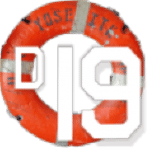
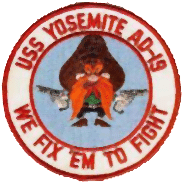 Yosemite Sam is the traditional mascot of the US Navy ship that bears his name. In 1979, Warner Brother Studios gave permission to reproduce Yosemite Sam's likeness for the USS Yosemite use.
Yosemite Sam is the traditional mascot of the US Navy ship that bears his name. In 1979, Warner Brother Studios gave permission to reproduce Yosemite Sam's likeness for the USS Yosemite use.

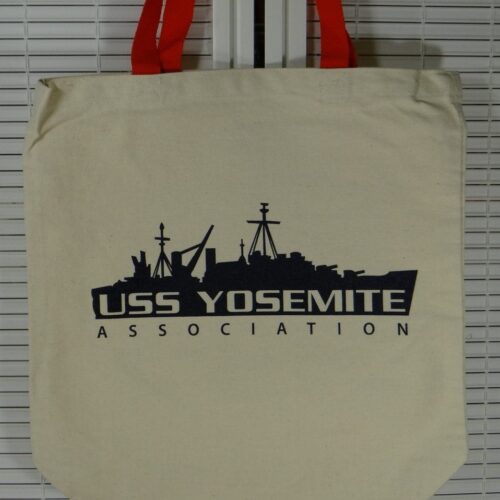
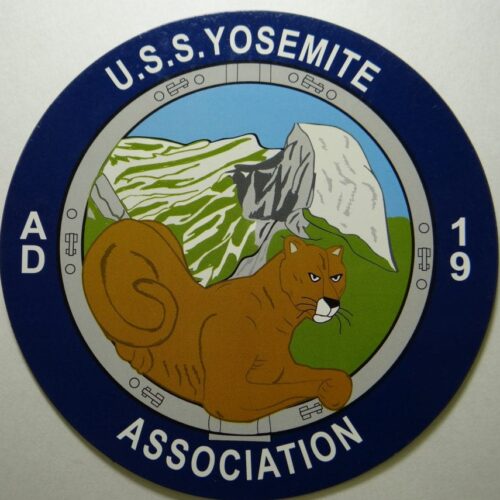
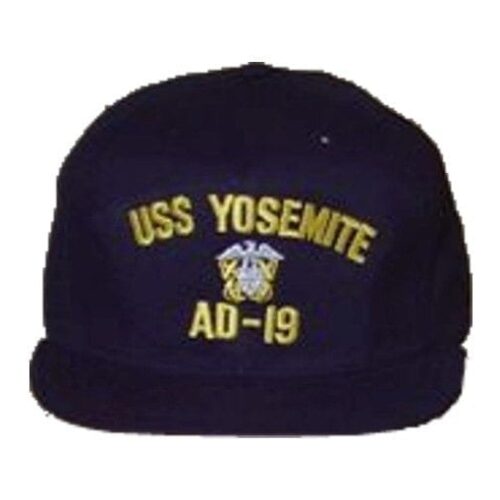
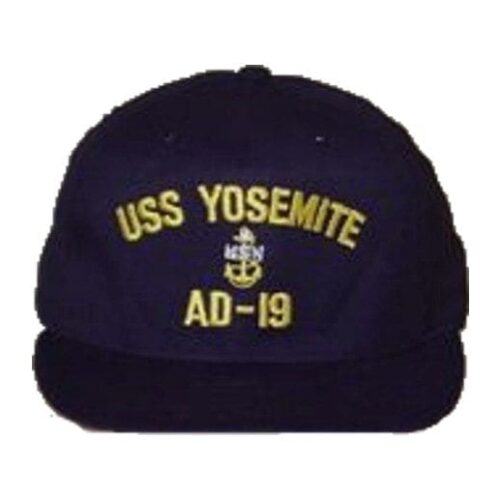
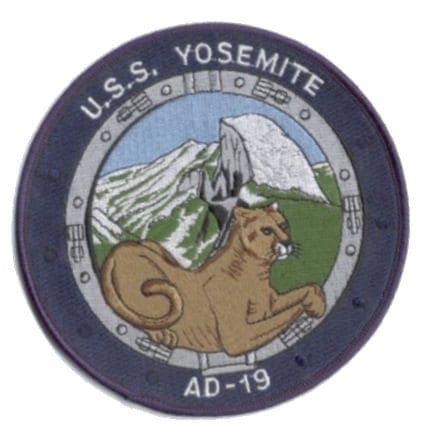
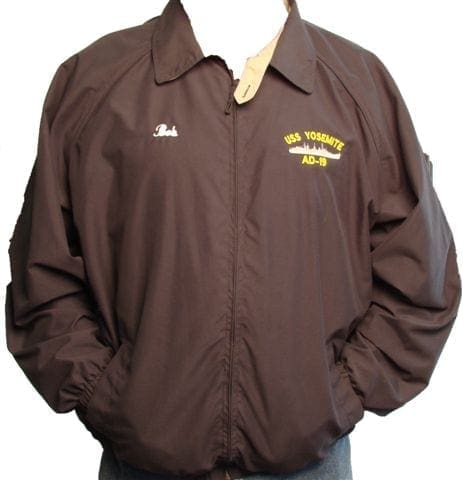
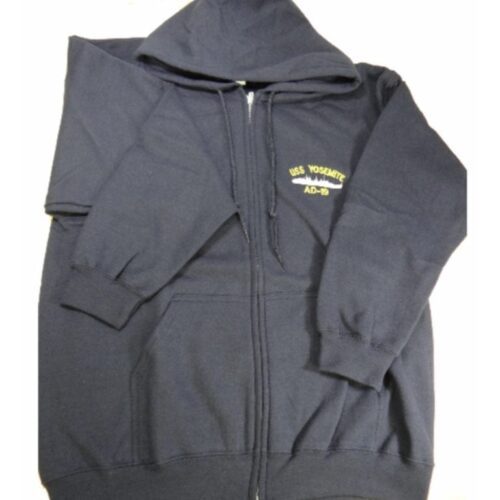
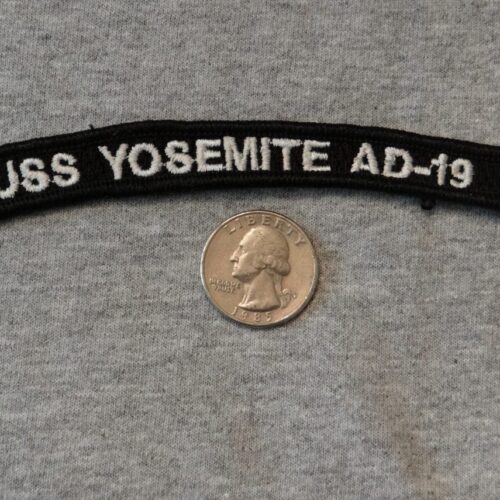
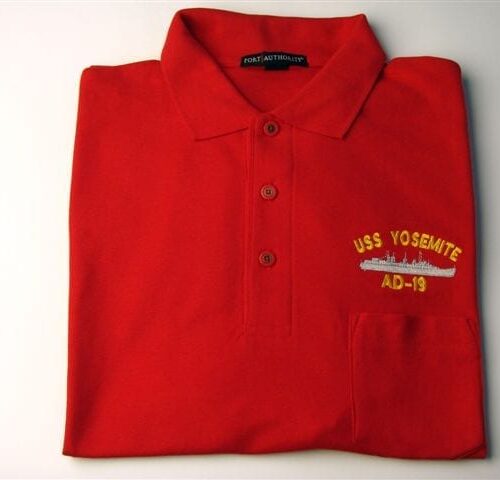
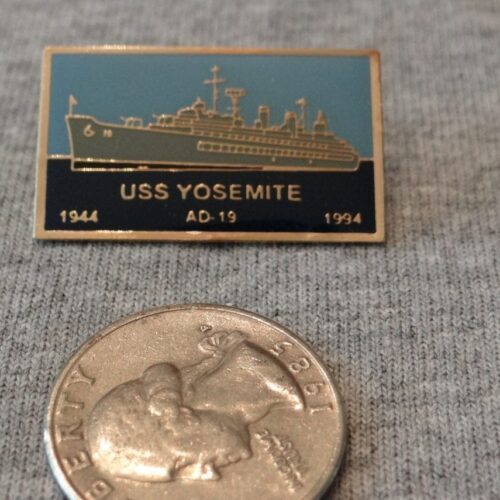
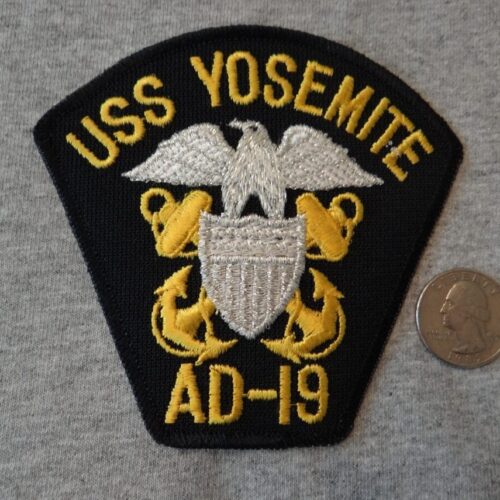
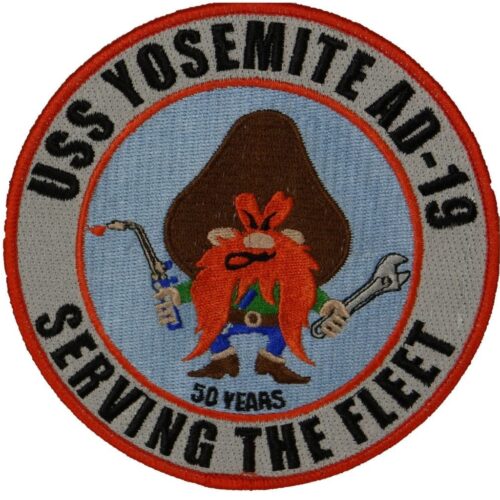
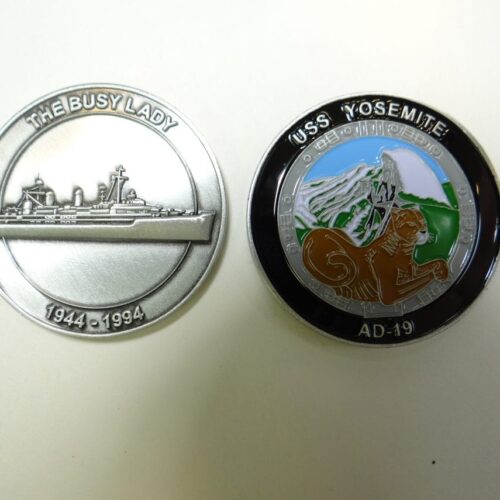
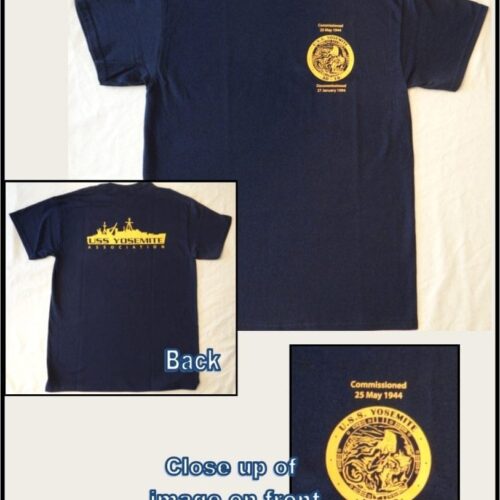
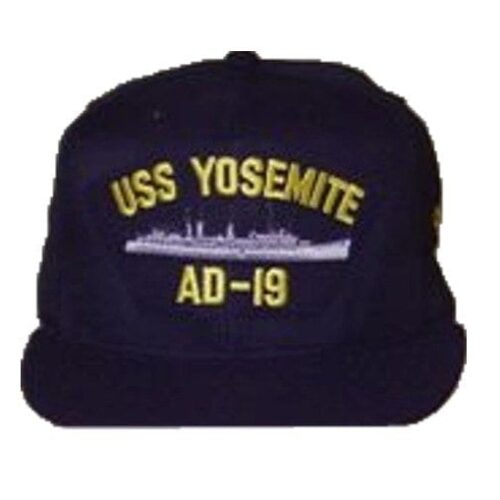
Great story Chief and quite an adventure. Just got out of high school about the time you retired then did my 23. DCFA to CWO4 retired off Yosemite in 1988…..